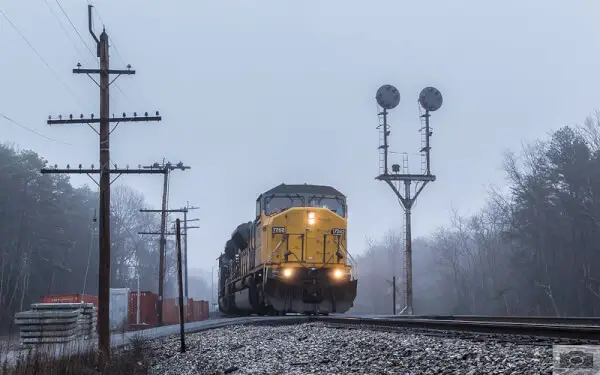Did you know that the SD90MAC has only ever been purchased by two Class 1 railroads? Yes, you read that correctly. It was first purchased by the Union Pacific (UP) and Canadian Pacific (CP) when it was established as a performance on the rail tracks (CP). And, just like that, there is a plethora of fascinating information to be aware of. Let’s read this article to understand everything there is to know about the SD90MAC’s impact on railroad history!
The History of the SD90MAC
The SD90MAC began its trip in 1995, and it was built with its predecessors, the SD80MAC locomotives. However, the manufacturers did not begin full-scale production until 1996. This locomotive’s engine was not an ordinary engine, since it was capable of producing roughly 6,000 horsepower on its own. It was also the first locomotive to be shipped with such horsepower, the SD90MAC-H.
A phase-II cab is included in the SD90MAC-H variant. The presence of such a feature is since it improves the visibility of the cab as compared to prior models.
One of the more intriguing aspects of this locomotive is that railroads used to assign it a unique model designation. The part number was SD9043MAC, and it was assigned that way so that when they became available, you could re-engine them with 6,000 horsepower.
People, on the other hand, used to have major problems with this powerful engine. As a result, users wouldn’t be able to enjoy the engine’s services for much longer. Due to the problems, the engines on over 400 SD90MAC locomotives were replaced with a low-powered 4,300 hp 710 engine.
Only 70 of the SD90MAC-H versions of these locomotives were ever produced as a result of these issues, and they could only be utilized on the major railroads. Electro-Motive Diesel attempted to make a low-power version engine dubbed SD89MAC with a 12-cylinder engine in an attempt to make up for these losses. Unfortunately, this model’s prototype was the only one made.
What Engine is in an SD90MAC?
The SD90MAC is equipped with a powerful 16-cylinder engine that produces 6,000 horsepower. General Motors Electro-Motive Division’s C-C diesel-electric locomotive was one of the largest single-engine locomotives ever built. It was so massive that it dwarfed the dual-engine DDA40X, another monstrosity.
The SD90MAC engine also includes radial steering trucks with AC traction motors and an isolated safety cab to reduce cab vibration. It also has a larger radiator section than prior models.
What is the Current Status of SD90MAC?
While the Union Pacific still has SD90MAC locomotives, the rest of the model has been rebuilt into the EMD SD70ACU locomotives. The Canadian Pacific, another owner of this locomotive, changed their SD90MACs to SD70ACUs as well.
How long is an SD90MAC?
The SD90MAC is 24.43 meters in length.
What Engine is in an SD90MAC?
The SD90MAC has a 16-cylinder diesel engine, which is one of the largest single-engine cylinders ever produced. It has a maximum speed of 70 mph and can produce up to 6,000 horsepower.
How many SD90MAC are there?
The company only made 478 SD90MACs in total. However, due to engine difficulties, the majority of them were reworked into new versions.
How much Horsepower does an SD90MAC have?
The SD90MAC’s engine can produce up to 6,000 horsepower.
What does an SD90MAC weigh?
Because there were various variations, each one weighed differently than the others. The SD9043MAC locomotive weighed 118 tons, whereas the SD90MAC-H locomotive weighed 193 tons.
How much does SD90MAC cost?
The estimated cost of SD90MAC is about $2.5 million. However, the price might vary depending on its availability and region.
Are there other versions of SD90MAC?
There are, of course, various additional important SD90MAC variations. The SD89MAC and the GM 90, 91, and 92 were two experimental variations of this device. The SD7ACe and SD90MAC-H are two more variations.
Conclusion
With the hopes of developing a powerful locomotive engine, it appears that the Electro-Motive Diesel was unable to achieve success with this locomotive. The endeavour to build such a strong engine, on the other hand, was undoubtedly a risky move in the railroad sector!
Peter has been building model trains for longer than he can remember. An avid fan of HO and O scale this blog is a creative outlet to allow him to dive further into other scales and aspects of the model train community and hobby.
